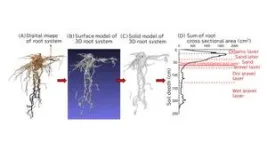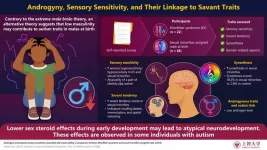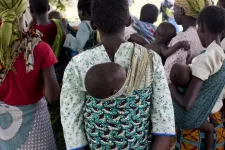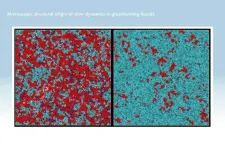Study identifies coastal black pine trees resistant to tsunamis and strong winds
2025-01-08
(Press-News.org)
Researchers in Japan have found that the taller the Japanese black pine trees (Pinus thunbergii) along the coast, the deeper their roots go into the ground. Trees with deeper roots are more resistant to damage from tsunamis and strong winds. Their findings suggest that the resilience of coastal P. thunbergii trees may be improved by inducing deep root growth, specifically in short trees. The study was published in the Journal of Forest Research.
Many P. thunbergii trees have been planted in coastal forests in Japan because they are salt-tolerant and can grow in sandy soils lacking nutrients. P. thunbergii trees are very resistant to tsunamis, strong winds, and blowing sand because their strong roots grow straight down and deep. Such trees should offer protection to houses and fields from natural disasters.
During the Great East Japan Earthquake in 2011, P. thunbergii trees along the coast played an important role in suppressing wave forces and debris carried by tsunamis. However, several P. thunbergii trees with roots that did not grow deep enough were severely damaged and washed away.
“If we can estimate how deep the roots of the trees have grown without digging them up, we can easily understand which trees are less resistant to disasters,” said Professor Yasuhiro Hirano of Nagoya University, the first author of the study. “So, our team tried to clarify whether the characteristics of the aboveground parts of P. thunbergii trees and the characteristics of the soil around them help to estimate their maximum root depth.”
The research team of Hirano, Associate Professor Toko Tanikawa, and their colleagues first dug up the roots of P. thunbergii trees on the coast of Aichi Prefecture, Japan, to measure the maximum depth of the roots and analyze the characteristics of the aboveground part of the trees and the soil around them. To study the root system structures, 700 digital photographs of each tree, from all angles, were taken on-site right after excavation, eliminating the need to transport samples to the lab.
In the laboratory, the researchers analyzed the relationship between the maximum depth of roots measured in the field and the characteristics of the aboveground part of the trees and the soil around them. They found that as P. thunbergii trees grew taller, their roots grew deeper. This relationship was also consistent with the results of previous studies on 43 P. thunbergii trees harvested in Japan.
The researchers also created three-dimensional structures of the root system based on the digital photographs they took in the field. “We created not only surface models but also solid models of the root system, which allowed us to continuously estimate the sum of the root cross-sectional area at any depth in the depth direction,” Hirano said.
Their findings suggest that shorter P. thunbergii trees are more likely to fall because their roots have not grown deep enough to hold them up in strong winds or extremely large waves. “A high water table near the coast and hard soil are thought to prevent roots from growing deep,” Hirano said. “So, if, for example, we help improve drainage for the high groundwater or soften the soil specifically at short P. thunbergii trees, we may improve the disaster mitigation capacity of P. thunbergii coastal forests.”
END
[Attachments] See images for this press release:


ELSE PRESS RELEASES FROM THIS DATE:
2025-01-08
Why have males been overrepresented among geniuses in STEM fields so far? A popular biological psychological explanation is the Extreme Male Brain Theory (EMB), which suggests that an overdose of prenatal androgen (male hormone) leads to the hyper-masculine brain type, characterized by a strong geek tendency and insensitivity to others' feelings. This theory explains the etiology of autism spectrum disorder (ASD) and inevitably connects prenatal androgen action with talents in specific fields.
However, the current research shows evidence that the opposite story might be true: reduced androgen exposure in ...
2025-01-08
Declining blood levels of two molecules that occur naturally in the body track closely with worsening Alzheimer’s disease, particularly in women. Levels were found to drop gradually, from women with no signs of memory, disorientation, and slowed thinking to those with early signs of mild cognitive impairment. Decreases were more prominent in women with moderate or severe stages of the disease. Declines in men were evident in only one molecule, revealing a disease-specific difference between the sexes.
Six million Americans, most over the age of 65 and predominantly women, are currently ...
2025-01-08
New international research collaboration to develop and test an improved dietary supplement for pregnant women
Poor nutrition during pregnancy can have serious consequences for both maternal and child health. A new research collaboration – ‘Mother’s Micronutrient Supplement for Pregnancy and Lactation’ (MoMS) – between researchers in Kenya, Norway and Denmark aims to develop and test a new, improved dietary supplement to reduce incidences of low birth weight, improve maternal and child health, and enhance growth and cognitive development in children. MoMS ...
2025-01-08
Continuing significant advancements in the field of xenotransplantation, surgeon-scientists from the University of Maryland School of Medicine provided an extensive analysis on the second patient in the world to receive a genetically-modified pig organ. Lawrence Faucette, 58, received a pig heart at the University of Maryland Medical Center in 2023 to treat his end-stage heart failure. He lived for 40 days before choosing to forgo additional treatment after the transplant began to fail due to rejection.
The report documenting insights ...
2025-01-08
A Cranfield University, UK, academic has used drone mapping to investigate a 3000-year-old ‘mega fortress’ in the Caucasus mountains. Dr Nathaniel Erb-Satullo, Senior Lecturer in Architectural Science at Cranfield Forensic Institute, has been researching the site since 2018 with Dimitri Jachvliani, his co-director from the Georgian National Museum, revealing details that re-shape our understanding of the site and contribute to a global reassessment of ancient settlement growth and urbanism.
Fortress settlements in the South Caucasus appeared between 1500-500 BCE, and represent an ...
2025-01-08
During IVF treatment, doctors use ultrasound scans to monitor the size of follicles - small sacs in the ovaries containing eggs - to decide when to give a hormone injection known as the ‘trigger’ to prepare the eggs for collection and ensure that they are ready to be fertilised with sperm to create embryos. The timing of the trigger is a key decision, as it works less effectively if the follicles are too small or too large at the time of administration. After the eggs are collected and fertilised by sperm, an embryo is then selected and implanted into the womb to hopefully lead to pregnancy.
Researchers used ‘Explainable ...
2025-01-08
Tokyo, Japan – Glass might seem to be an ordinary material we encounter every day, but the physics at play inside are actually quite complex and still not completely understood by scientists. Some panes of glass, such as the stained-glass windows in many Medieval buildings, have remained rigid for centuries, as their constituent molecules are perpetually frozen in a state of disorder. Similarly, supercooled liquids are not quite solid, in the sense that their fundamental particles do not stick to a lattice ...
2025-01-08
Toronto, ON – New challenges in HIV prevention and care are emerging due to climate change, according to a review published earlier this month in Current Opinions in Infectious Disease.
Researchers from the University of Toronto analyzed 22 recent studies exploring HIV-related outcomes in the context of climate change and identified several links between extreme weather events and HIV prevention and care.
Climate change-related extreme weather events, such as drought and flooding, were associated with poorer HIV prevention outcomes, including ...
2025-01-08
A University of Exeter funding scheme designed to combat the global challenge of fungal antimicrobial resistance (fAMR) has announced a new call for applications.
The FAILSAFE project (Fungal AMR Innovations for LMICS: Solutions and Access For Everyone) is a groundbreaking initiative tackling antifungal drug resistance. The project aims to promote worldwide innovations to tackle the global health threat of fungal infections in humans, plants and animals increasingly growing resistant to available treatment.
Already, the FAILSAFE project has awarded more than £1.7 million in grants ...
2025-01-08
AMR is when microorganisms that cause infections, such as bacteria and viruses, change over time and no longer respond to antibiotic medicines.
It makes serious conditions such as HIV, tuberculosis and malaria more difficult to treat and increases the risk of severe illness, disease spread and death.
AMR particularly impacts low-to-middle-income countries where water quality is often poor and the spread environmental spread of AMR via wastes can be high.
In 2015 the World Health Organization (WHO) formulated a Global Action Plan to co-ordinate efforts to tackle AMR.
As a result, 194 WHO member states committed to developing country-specific ...
LAST 30 PRESS RELEASES:
[Press-News.org] Study identifies coastal black pine trees resistant to tsunamis and strong winds






